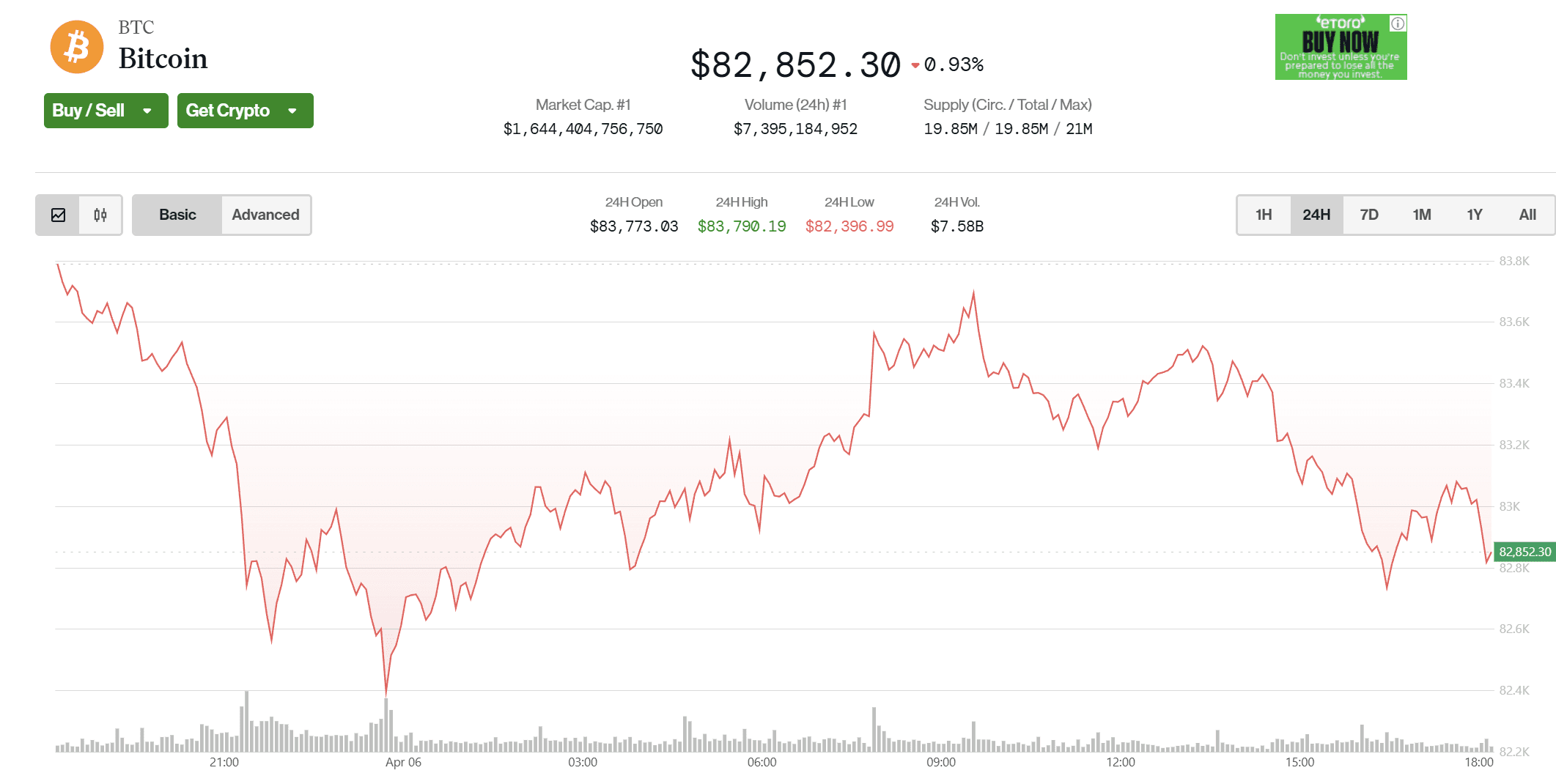Bitcoin (BTC) has remained stable amid the Nasdaq turmoil caused by tariffs, which has excited market participants about its potential as a hedge asset.
Nevertheless, bulls may need to pay attention to the bond market, as dynamics similar to the March 2020 COVID crash seem to be emerging.
The Nasdaq, a Wall Street index dominated by tech stocks and positively correlated with Bitcoin, has dropped 11% since President Donald Trump announced reciprocal tariffs on 180 countries on Wednesday, escalating trade tensions and triggering retaliatory tariffs from China.
Other US indices and global markets have also been hit hard, with risk currencies like the Australian dollar plummeting and gold prices falling.
Bitcoin has remained essentially stable, continuing to trade above $80,000, with its resilience seen as a sign of its evolution into a macro hedging tool.

"The S&P 500 has dropped about 5% this week as investors prepare for trade-driven profit pressures," said David Hernandes, crypto investment expert at 21Shares, in an email to CoinDesk. "After briefly dipping below $82,000, it quickly rebounded, consolidating its macro hedging position during macroeconomic stress. If broad market volatility continues, its relative strength may continue to attract institutional capital inflows."
This perception of stability could quickly transform into a self-fulfilling prophecy, consolidating Bitcoin's position as a hedge asset for years to come, as noted by MacroScope on the X platform.
Treasury Basis Trade Risk
However, sharp downward volatility in the short term is not impossible, especially due to the "Treasury basis trade" facing risks from highly volatile bond prices.
Basis trading involves highly leveraged hedge funds, reportedly with leverage ratios up to 50:1, exploiting tiny price differences between Treasury futures and securities. This trade collapsed in mid-March 2020 when the coronavirus threatened the global economy, leading to a "cash grab" where investors sold almost all assets to obtain US dollar liquidity. On March 12, 2020, Bitcoin dropped nearly 40%.
"When market volatility surges—as it is now—it exposes highly leveraged arbitrage trades vulnerable to significant market movements. The US Treasury market liquidation in March 2020, which disrupted basis arbitrage trades, is a recent example. The risk of leveraged arbitrage trade liquidation is high..." wrote Robin Brooks, Managing Director and Chief Economist at the International Institute of Finance, in an email to CoinDesk.
This risk is real, as the basis trade scale reached $1 trillion by the end of March, double the size of March 2020. According to ZeroHedge, its position allocation means that for every basis point change in Treasury yields (which move inversely to prices), its stake value changes by $600 million.
Thus, increased volatility in Treasury yields could trigger liquidations similar to the COVID period, leading to widespread asset sales, including Bitcoin, to obtain cash.
On Friday, the MOVE index—representing the 30-day implied or expected volatility in the US Treasury market based on options—surged 12% to 125.70, its highest level since November 4, according to TradingView data.
A recent Brookings Institution paper highlighted the severity of the situation, suggesting the Federal Reserve consider targeted interventions in the US Treasury market during extreme market stress, particularly supporting hedge funds engaged in basis trading.
Let's wait and see how events unfold next week.





